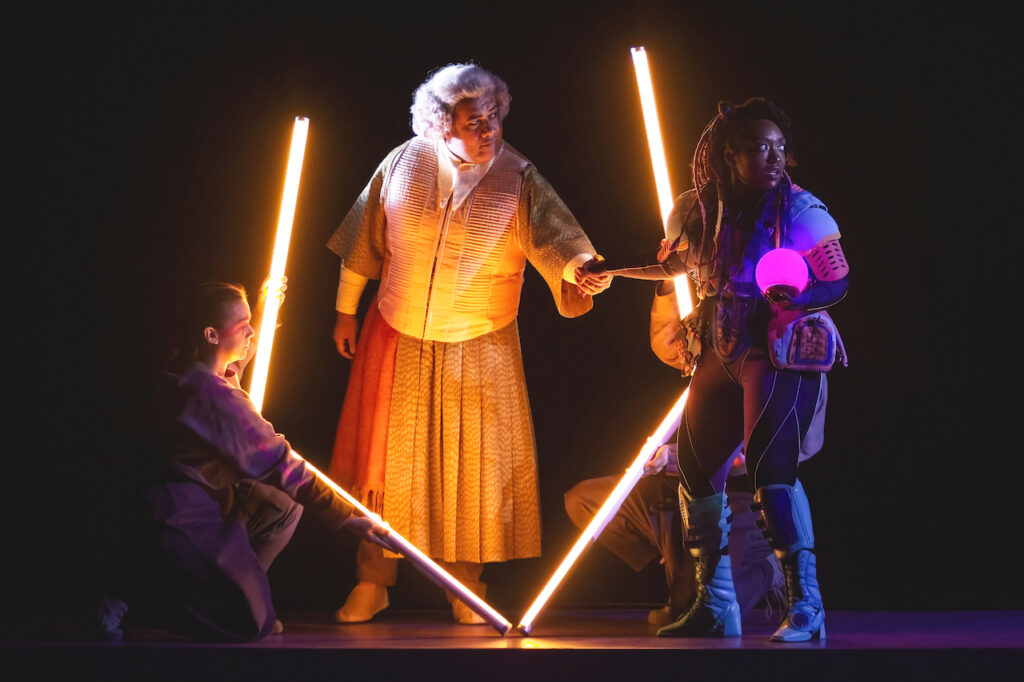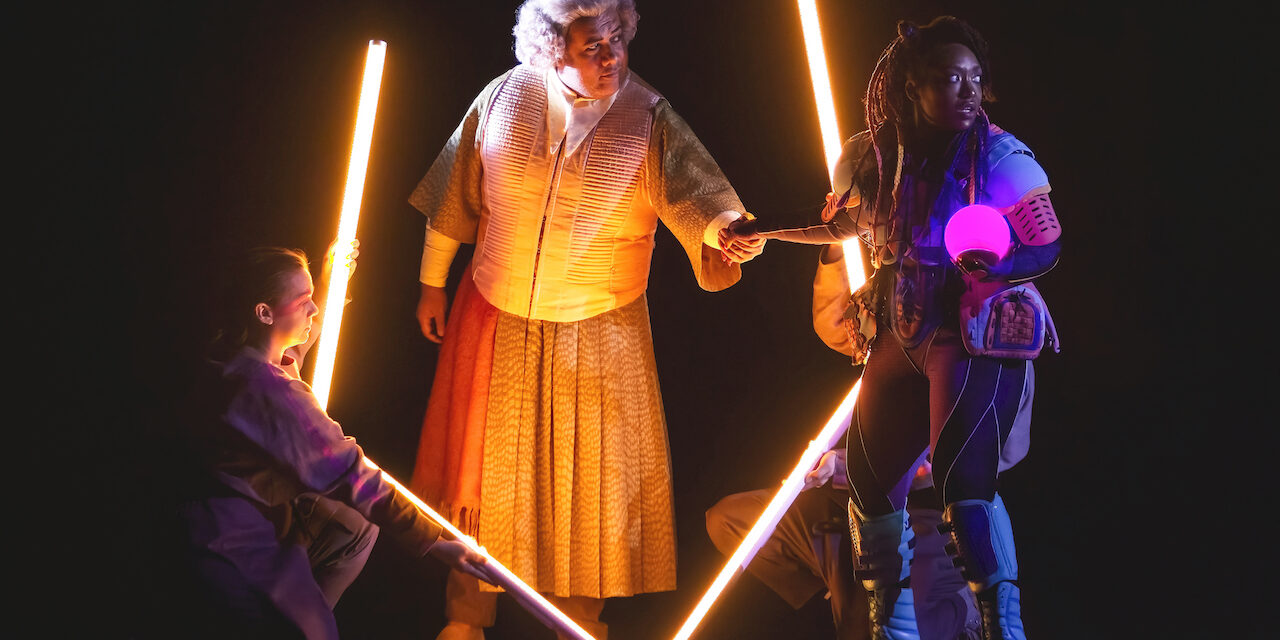
Welsh National Opera’s new production of Mozart’s The Magic Flute aims to cast fresh light on the 18th century work.
One of Mozart’s most popular operas, The Magic Flute is also one of his most enigmatic. It follows the journey of Tamino and his search for the beautiful woman, Pamina, who has been taken prisoner by the magician Sarastro. Tamino undergoes trials to release Pamina while Sarastro goes to battle with Pamina’s mother the Queen of the Night in a dramatic conclusion.
It is a complex story and for centuries the opera has puzzled audiences and academics alike but this uncertainty also offers directors and designers the opportunity to place their own interpretations on the work.
For the new production, which opened at Wales Millennium Centre on March 5, Director Daisy Evans and Designer Loren Elstein have gone back to the basic plot –but added a few modern twists.
“Anything is possible within The Magic Flute and it has been fun to do,” says Loren. “And it’s about making it relatable, so really it’s about two parents who have their different opinions about what is best for their child and it’s them navigating how to do what they think is best.”
The work begins with a back story shared with the audience during the opening overture, in which Sarastro and the Queen of the Night were a couple and are the parents of Pamina. But, when their relationship broke, so did their worlds.
“It is really important to have a sense that it feels that the world has fractured,” explains Loren. “It used to be united but has since split up into two parts. So the Queen of the Night and the King of the Day were in unison at the beginning of time but not any longer which sets up this new separated world.
“That led us to rewriting the rules and creating this new world so we were able to make it relevant. We were inspired by the idea of it being in a sort of a gaming aesthetic, with a set logic or structure to the world with a very bound set of rules that the characters have to stay within.”
Loren’s sets and costumes create this new separated world in a series of constantly turning staircases sometimes allowing characters to cross from one realm into the next and sometimes preventing them.
“It’s like a Rubik’s Cube or an astrolabe so it’s constantly spinning and is made up of lots of different staircases that twist and turn and join up. To be able to create this new logic and rules to the space, certain people have different access to different levels and, when the staircases spin round and connect, they create a pathway for some people to make an entrance into the space.
“I’m really interested in the idea of these different staircases being like a map or a labyrinth and unexpected forces being at play, balancing precariously on different levels.”
Loren has designed for dance, theatre, film and music tours at venues including the Old Vic, Lyric Hammersmith and Playhouse Theatre. This is her fourth time working with WNO having also designed for Don Pasquale, Migrations and Cherry Town, Moscow. Her designs and costumes for The Magic Flute draw not just on geometry but also feature strong colours and neon lights.
“It is all very saturated with colour, like a video games aesthetic which is very youthful,” says Loren. “The day world is the Palace of the Day, Sarastro’s world, which is very much about fact, form and logic so is sharp angles and very geometrical.
“In contrast the world of the Night Time has more of a sense of freedom, there’s no filter, it’s a neon world which picks up different shapes and textures which disappear when you go into the Sun Palace.”
The production also features puppetry as two of the characters, the bird catcher Papageno and his partner Papagena are always accompanied by flying birds.
Daisy and Loren have looked at how to give the female roles more agency in this new Magic Flute.
“We found it quite problematic at the beginning trying to work out how to tell the story in 2022/2023 because inequality seems to have been very present in the original work,” says Loren.
“Equality is very important in this piece, we were looking at how women are treated within the original Magic Flute and how we can make that relevant for today.
“So the original Queen of the Night is depicted as this horrific woman who is blown into smithereens for being evil. And Pamina is placed as a prisoner who needs the prince, Tamino, to come and save her. There is also the sense of the masculine characters going on a trial to be initiated into this very male-orientated world.
“We wanted to change that so the back story sets up the idea of Tamino and Pamina having known each other as kids so they are old friends. So when Tamino is first shown the photo of Pamina he is on a quest to find his long-lost friend rather than just a photo of a beautiful woman.
“And the reason Pamina ends up in the Sun Palace is her conscious choice. Her mother had brought Pamina up in the Night Time and taught her everything about the Night Time. She makes a decision to learn everything about the Day Time so she chooses to go back to her father’s palace to learn everything. It is giving the characters more control over their decisions.”
By Diane Parkes
Photo credit: Craig Fuller


